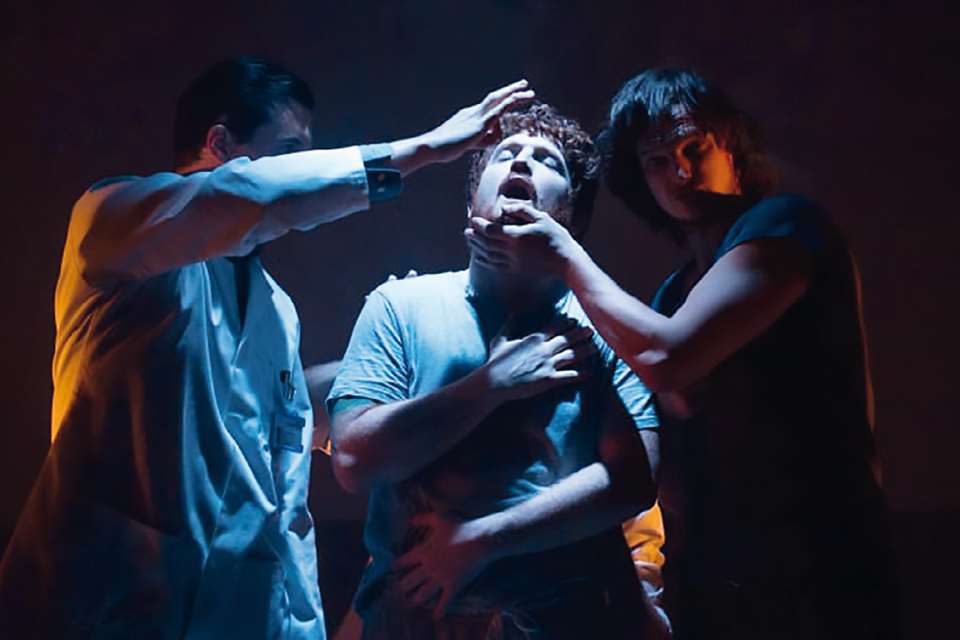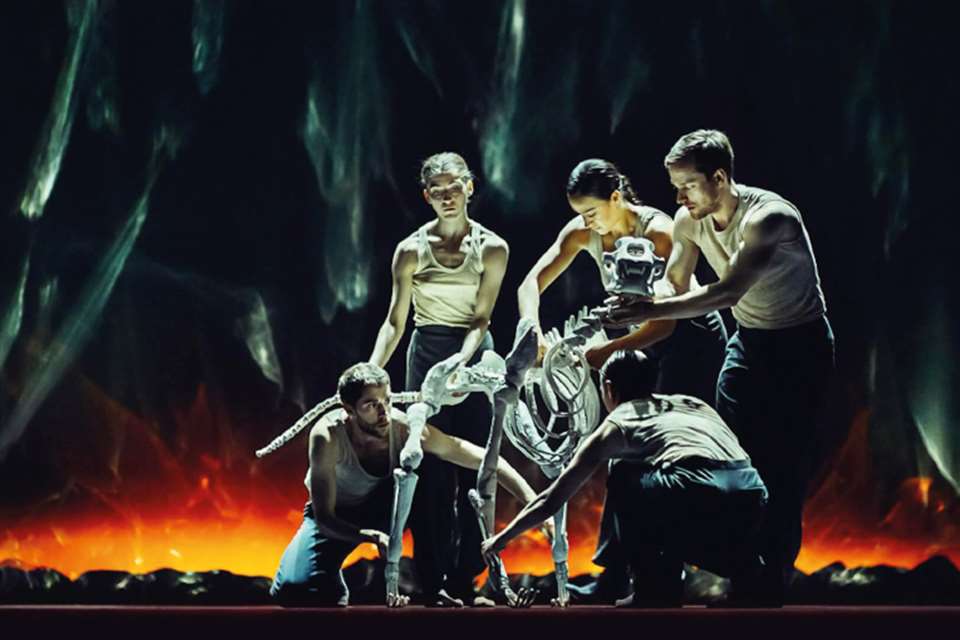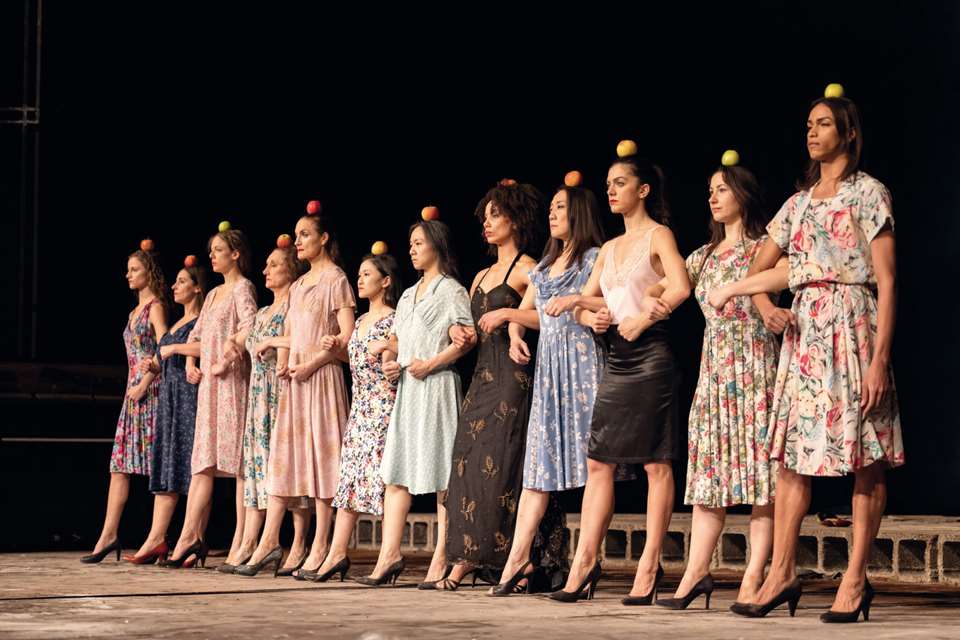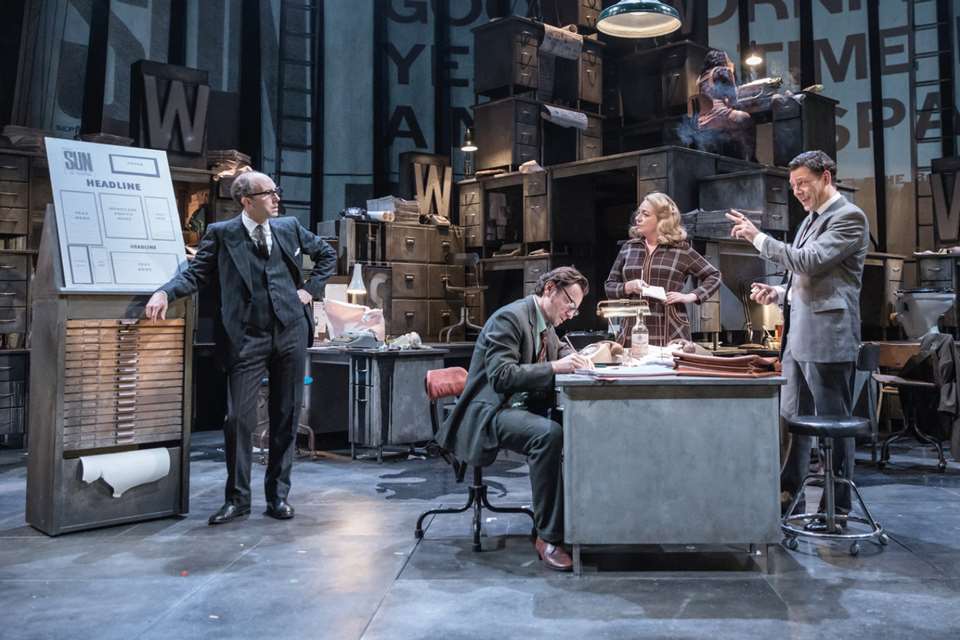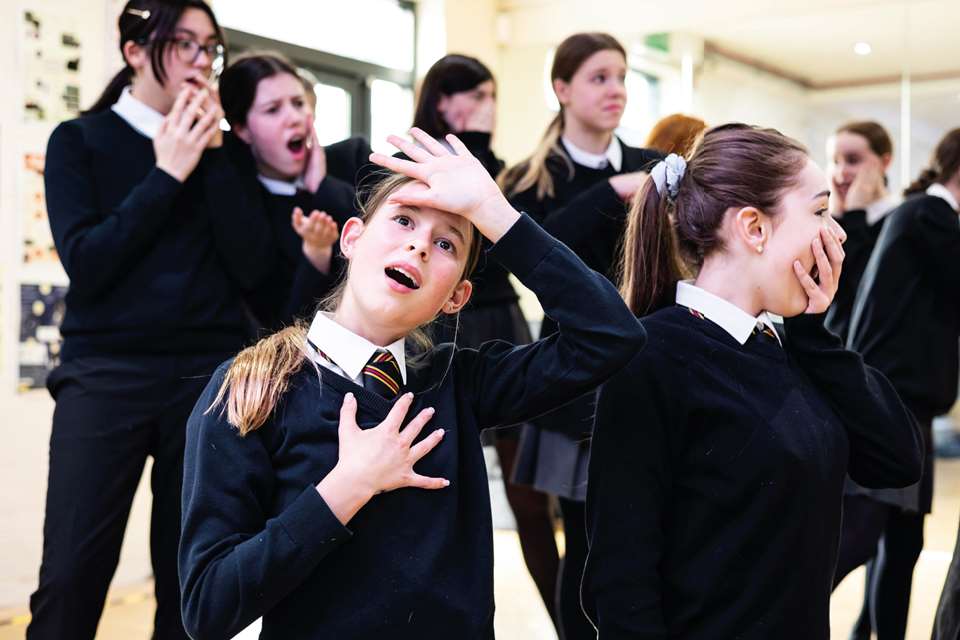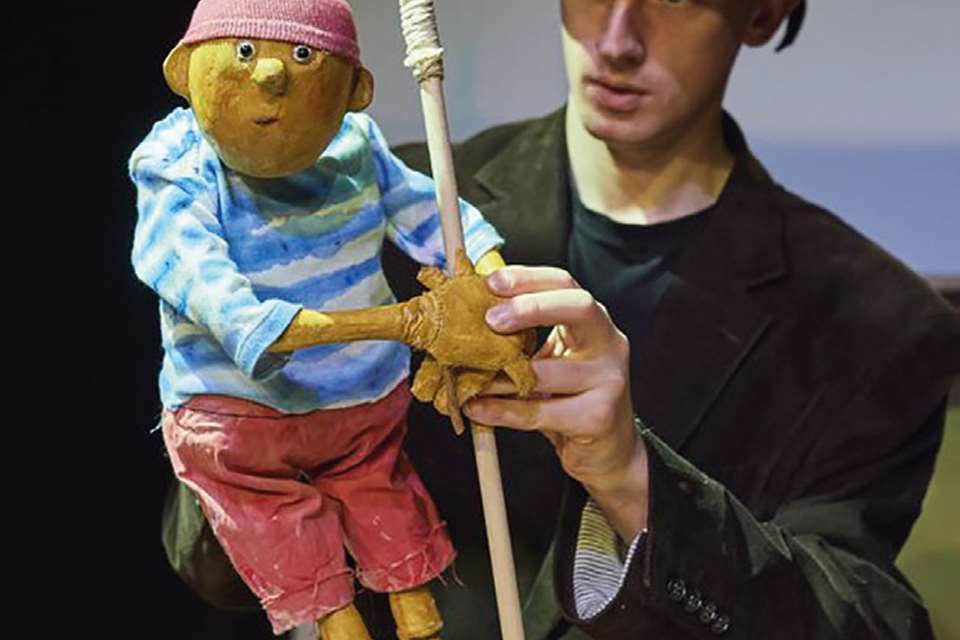Practitioner focus: Steven Berkoff
Wendy Frost
Wednesday, May 1, 2024
Exploring the stylistically heightened work of actor, playwright and theatre maker Steven Berkoff, Wendy Frost takes a look at how you can explore elements of physical theatre and expressionism with your class, complete with an exercise to try

Mason Summers
Steven Berkoff was born in East London in 1937 and began building his internationally renowned physical theatre style after training at the City Literary Institute, Webber Douglas Academy of Dramatic Art, and at Jacques Lecoq (L’École Internationale de Théâtre). This amalgam of training and influences provided a springboard into his extensive career which encompasses acting, directing, writing, radio, TV and film.
Influences and the classics
Berkoff has a passion for the ‘classics’ and verse; he has written his own interpretations of many famous texts and stories. His adaptation of Greek was a homage to Oedipus as he saw the disintegration of society reflected in the streets around him.
‘I ransacked the entire legend… this is not simply an adaptation of Sophocles but a recreation of the various Oedipus myths which seemed to apply, particularly to a play about what I saw London had become. London equals Thebes and is full of riots, filth, decay, bombings, football mania, mobs at the palace gates, plague madness and post-pub depression. The play dealt with the idea of an emotional, social plague – apart from the actual biological one – that I saw was eating away at the heart of this nation.’ (Berkoff, 1992:139)
Influences for his writing vary, from short stories, myths, classical tales, or even writers such as Kafka for Metamorphosis, or Poe with The Fall of the House of Usher. Few of his plays are not adaptations or are stimulated by existing writers, with his favourite being Shakespeare. Berkoff's love of Shakespearean work stems from the complex characterisations, especially the role of the protagonist. This prompted him to create his one-man show Shakespeare's Villains where he delves into the world of the most infamous characters, exploring their psychology, as well as how they justify their own psychopathic actions.
Key features
During the early stages of the development of his style he experimented with his mime training to challenge the current dominance of the psychological and realist theatre, fusing the voice and body with the text. He utilised the mime techniques that he had been taught and experimented with these through improvisation to expand the movement. This also included creating objects with the body and finding verbal equivalents of gestures to ensure that voice and body were cohesive in the storytelling. This creative methodology also fed into his explorations of The Trial, which he adapted from Franz Kafka's novel of the same name.
His style is highly exaggerated, with energised movement sequences that are expressionistic and representative. He often uses grotesque and inflammatory in language and imagery, and has larger than life stereotypical characters; evidence of this can be seen in Kvetch, Brighton Beach Scumbags and Decadence. Sounds created can be atmospheric background noises, not just spoken text, and have a lyrical and rhythmic quality usually associated with music. He deduced that the movement of the body affects the voice, and vice versa, as his contemporary Grotowski was also discovering through his own experimentation.
Exercise: Developing exaggeration
- All stand in a wide circle.
- Teacher starts a small gesture with an accompanying sound. This must be surreal or non-naturalistic, for example: left arm lifts a couple of inches into the centre of the circle with an ‘oooo’ sound suggesting surprise. No dialogue or words. This first offering must be very small.
- The next person takes this offering and makes a tiny exaggeration to the movement and sound. It will likely be a small extension. The ‘origin’ should always be alive in the next addition.
- This continues to the next person. The movement and sound should only be a slight extension of what has just been offered to you by the previous person. This tiny increase and exaggeration extends and stretches the offering.
- This continues around the circle until the movement and sound offering has become extreme. You can continue to go around the circle for more than one rotation depending on the size of the group and how much the original offering has been exaggerated and extended. It can also be continued until there is nothing left to add!
This exercise is incredibly freeing and can provoke a lot of laughter. Participants will relax into this the longer you give them a chance to play. The vocals and movement should be continuously encouraged, and when this reaches an extreme people may even leave their position and travel their offering around the room to then return to their place. It is best to ensure that each person picks up their turn rapidly with no silence or stillness to be allowed to prevent the loss of rhythm or energy. Overlapping should also be encouraged to introduce Berkoff's idea of chorus.
References
- Berkoff, S. (1992) The Theatre of Steven Berkoff, London, Methuen Drama.
- Berkoff, S. (1996) Free Association, London, Faber and Faber.Whitmore, M. and Berkoff, S. (2018)
- Steven Berkoff: Shakespeare's Heroes and Villains, ‘Shakespeare Unlimited; Episode 104’. Available at: folger.edu/podcasts/shakespeare-unlimited/steven-berkoff-shakespeares-heroes-and-villains


